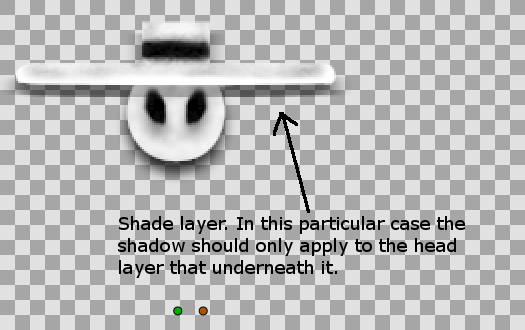Hi,
I am gonna talk about shadows here. Synfig has ‘Shade’ layer which is a great thing and comes very handy when one need to add a simple shadow, I use it a lot in my animations. But when you make a complex animation (e.g. full human body) you can’t use it in a lot of cases and have to draw shadows manually, which is a pain.
The main problem is that the shade layer ignores alpha and applies right under the object. It’s good in one case and bad in another. For example, let’s draw a simple head and hat on it. Let’s add a shade layer to the hat and now we have something like this:

Of course, you can make a manual shadow for the hat object, but it is an ugly solution. At least I didn’t find a descent one.
I see two nice solutions here:
- (better variant) Make a new blend method that will act as Behind + Onto, so it’ll add shadow only to the non-alpha objects behind it.
- (acceptable one) Same thing as above, but as a checkbox in the shade layer’s parameters. I guess it’ll be easier to implement.
So, what do you all think about it?